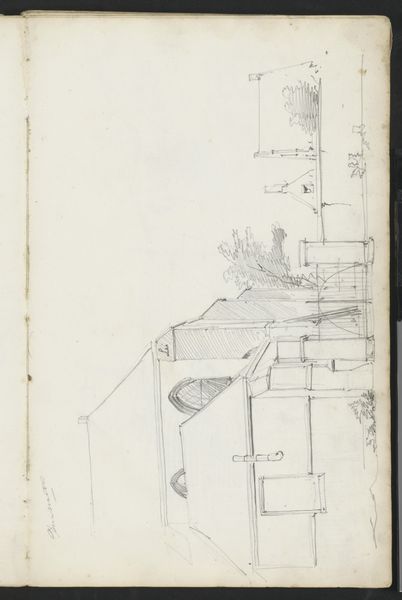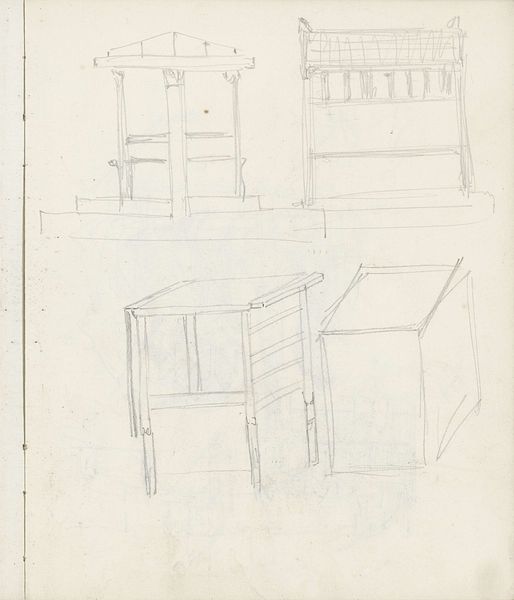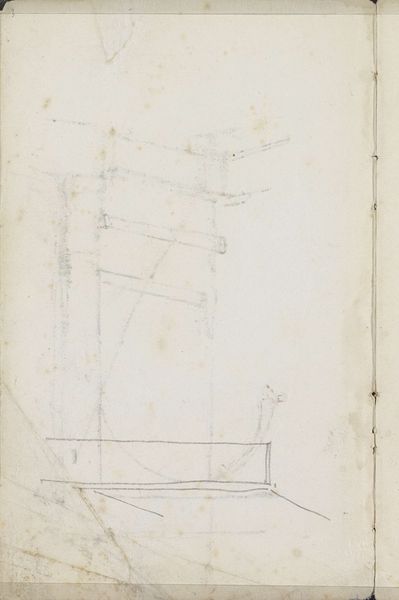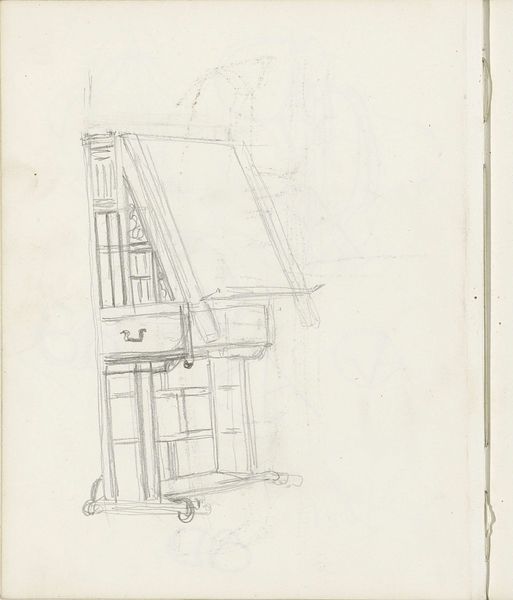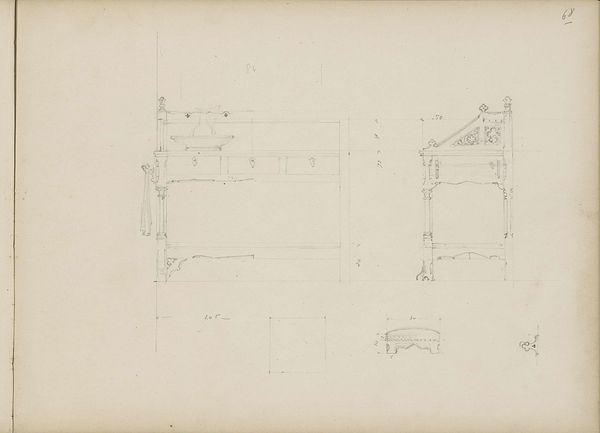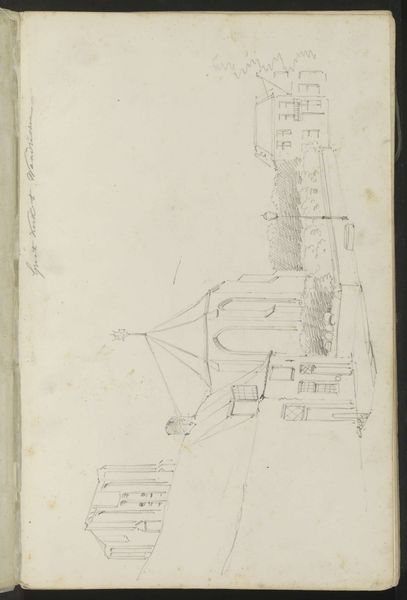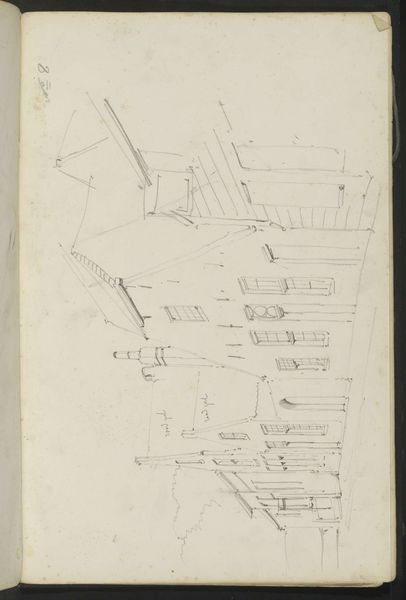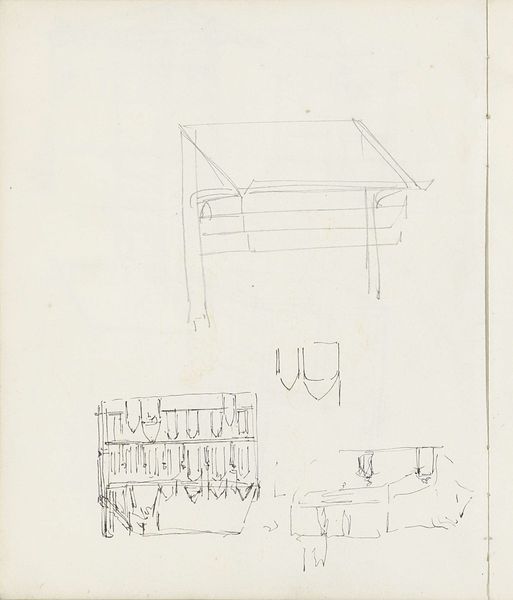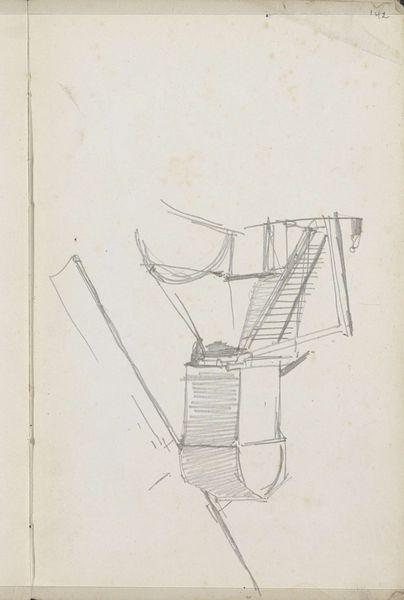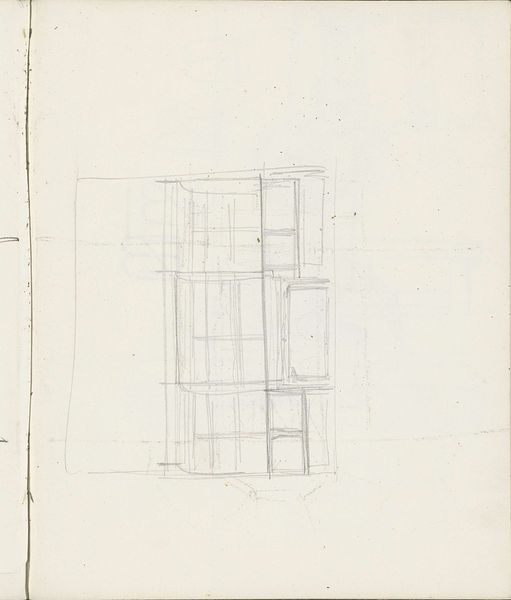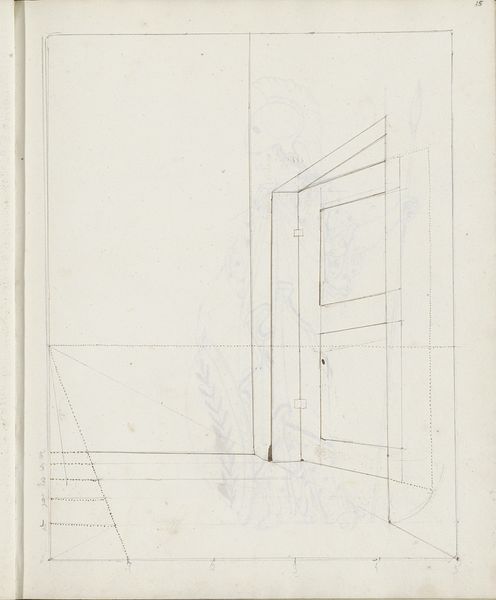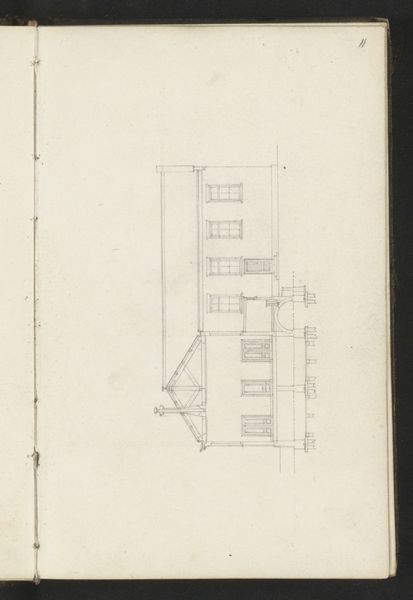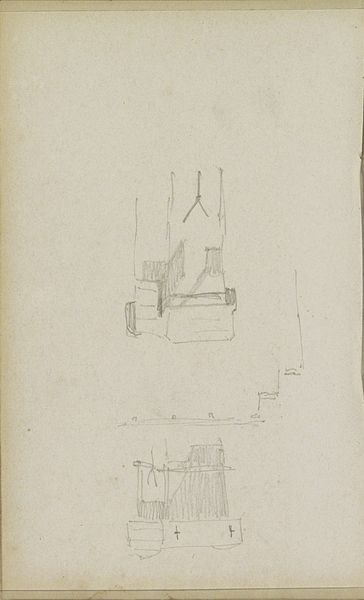
drawing, paper, ink, pencil, architecture
#
drawing
#
neoclassicism
#
landscape
#
paper
#
ink
#
pencil
#
academic-art
#
watercolor
#
architecture
Copyright: Rijks Museum: Open Domain
Curator: This drawing is entitled "Huis Peking te Baarn," created between 1816 and 1852 by jonkvrouw Elisabeth Kemper, and rendered with pencil and ink on paper. It seems to blend neoclassicism with landscape elements, as well as the architectural features. Editor: My immediate response is…delicacy. It's muted, almost ghostly, as though a memory captured in faint lines. I am particularly drawn to its lack of heavy outlining, with structural definition given to it mostly via what seem to be wooden latticework. It almost has a diagrammatic sensibility with the linear forms rendered to communicate a specific sense of structural orientation and placement, something you would find for constructing model prototypes. Curator: Yes, and situating this drawing within its historical context, we have to remember that Kemper was a woman working within a traditionally male-dominated artistic sphere. Architectural renderings often functioned to justify the power structures present at the time and in Kemper's case the structure takes on a more whimsical presence, one that has clear and visible ties to nature in the way its structural embellishments give way to a sense of natural order with wooden crossbars. I can't help but see this as a possible attempt to stake a claim on her representation amidst the patriarchy of the 19th century's Dutch landscape painting traditions. Editor: That reading definitely resonates, especially considering how the very name "Huis Peking," evokes a sense of the exotic, of somewhere beyond the typical Dutch landscape. It brings into question how Dutch national identity was formed in relation to this imagined 'other' during that time, given that the house appears almost as a fantasy. The symmetry of the home coupled with latticework might signal power through harmony and the control over nature. There's a potential subversion at play in that supposed harmony when considered as an attempt at harmonizing Kemper's self representation amidst societal expectations. Curator: Precisely! It makes one consider who got to depict space, and what ideological baggage those depictions carried. It speaks to larger issues about gender, class, and representation in 19th-century Dutch society. Editor: For me, the drawing triggers something very primal, something archetypal around "home," filtered through cultural appropriation. It seems to operate like a stage for a drama of belonging to play out within the theater of Dutch cultural history. Curator: So true; by bringing both socio-historical context and iconography to the table, we have successfully interpreted Kemper's composition within our 21st century framework. Editor: I couldn't agree more, each lens has enhanced our understanding today!
Comments
No comments
Be the first to comment and join the conversation on the ultimate creative platform.
